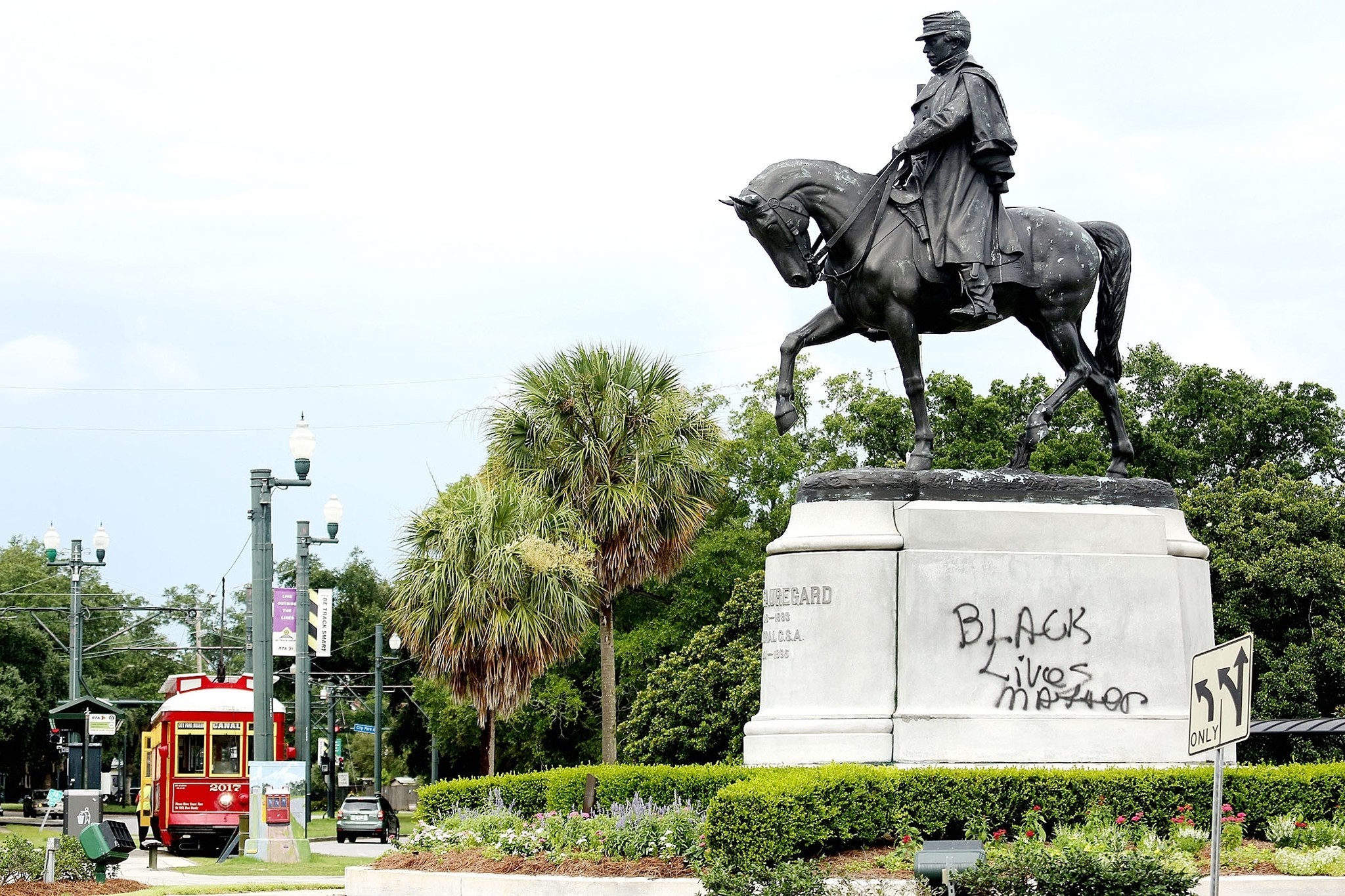After the Confederate flag that flew outside of the South Carolina governor’s office was removed, people have started to question why reminders of the South’s dark past were being taken down. Every time a monument is carried away, the act is met with cheers from historically oppressed minorities, as well as those who simply want to keep moving away from what the Confederacy represented. However, critics of their removal argue that taking away the monuments could possibly make people forget what happened. After all, one reason we learn about the mistakes our ancestors made is so that we won’t repeat them ourselves, right?
The reason why the Confederate monuments were originally put up was to commemorate those who were deemed heroic in the eyes of the late nineteenth- and early twentieth-century southerners, such as Robert E. Lee. These heroes were people who helped their armies win battles and held high positions in the Confederate government, trying hard to separate the South from the rest of the United States. There is even Confederate Memorial Day, which is observed in Alabama, Florida, Kentucky, Mississippi, South Carolina, Texas, Louisiana and Georgia. The day is recognized as a public holiday in all of those states except for Georgia.

For many southerners, remembering their Confederate heroes and what the Confederacy represented is still very important to them, because they claim that it’s part of their heritage. One of my ancestors was a slave owner in Virginia and probably would have supported the South during the war, but that doesn’t mean that I feel the need to honor and take pride in the fact that I’m descended from him. During the debate on whether the Confederate flag should be removed from South Carolina’s capitol grounds or not, I remember saying, “If they want to honor their southern heritage, why don’t they just put up a flag with a glass of sweet tea on it?” The point of the remark was to say that there are other ways to show southern pride without using symbols associated with racism and oppression, such as growing magnolias or serving southern food.
Removing the monuments and making a big deal out of doing so sends those who still consider the Confederacy a part of their heritage a message that it’s not really something they should be proud of; after all, the South lost the war. However, those who still take pride in that point of time in history typically are taking pride in its main values—Christianity and white supremacy—and each removal works to devalue those beliefs, which benefits society. Replacing Confederate monuments with statues that reflect modern values encourages everyone to embrace progress; it’s a pretty standard system of positive and negative reinforcement.
Yet, one big question some people are asking is whether it really is a good idea or not to remove the monuments. Most Americans view the era in which the Confederacy thrived as a dark point in our history, as something that, since it did occur, should only happen once. So, people need to be reminded that these events occurred and that the individuals involved existed. Without statues placed around to be seen, what they represent could eventually be forgotten.
One woman wrote an opinion piece for NBC saying, “Keep the statues where they are so that people can explain history to their kids. Keep them so that we can have a constructive dialogue,” and further explains that she believes that the removals are against the right of free speech. The racism and monuments are separate at this point in our time. Another opinion article written for the “Washington Post” argues against those who want to keep the statues, saying, “It’s privileged status, not history, that’s being protected. Whether or not they’re able to acknowledge it, the thing that all these indignant commentators rush to preserve is a toxic nostalgia for the time and place that Confederate monuments represent.” Those who are fighting to keep the monuments are ticked off and fearful that they’re losing their place in the social hierarchy where the whites were at the top and African Americans were second-class citizens.
One argument that I have against the NBC writer’s statement is that monuments aren’t textbooks, meaning they are not the only thing we have to remember the Confederacy. There are countless tomes cataloguing the beliefs of the antebellum South, as well as plantations and re-creations from the time period that curious history buffs can visit. I feel like actually reading primary texts and seeing what living conditions were like for the oppressed are much more effective (and more interesting) than casually glancing at Jefferson Davis during a morning commute. My stance leans toward the “Washington Post” writer’s train of thought. The monuments celebrate white supremacy and keeping them validates backwards beliefs.
There’s a difference between removing the statues and destroying them, though. What’s happening to these monuments is they’re being moved and either put in storage or into a museum. That way, the reminder is still there, but they’re displayed in an appropriate and educational manner. People can still see them if they wish; destroying them, though, erases history. After the fall of Nazi Germany, the concentration camps were preserved and many anti-Semitic objects were put into museums, archives and collections, not destroyed, and it’s still an integral part of history classes everywhere. However, there aren’t swastikas and Hitler statues on every corner anymore. Trust me, I don’t think people will be forgetting about the Confederacy anytime soon just because some monuments were moved.











